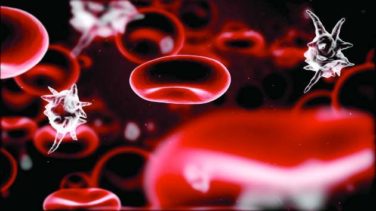Among patients with metastatic colorectal cancer, muscle loss of 9% or greater during chemotherapy predicted significantly worse survival than did loss of less than 9%, independent of known prognostic covariates.
The proportion of patients with muscle loss of 9% or more (lowest tertile) who survived 6 months was 33%, compared with 69% for patients with less muscle loss (tertiles 2 and 3). The proportion of those who survived 1 year were 17% vs. 49% (log-rank P = .001). The association remained significant when adjusted for sex, age, baseline LDH concentration, comorbidity, mono-organ or multiorgan metastases, treatment line, and tumor progression (hazard ratio [HR], 4.47; 95% CI, 2.21 to 9.05; P less than .01).
“Muscle loss during chemotherapy was associated with worse overall survival, independent of important prognostic covariates. This is a new finding and raises the question whether interventions aimed at preservation of muscle mass during treatment are effective in improving outcome,” wrote Dr. Susanne Blauwhoff-Buskermolen of VU University Medical Center, Amsterdam, and colleagues (J Clin Oncol. 2016 Feb 22. doi: 10.1200/JCO.2015.63.6043).
Previous studies demonstrated that low muscle mass is associated with poor survival and greater treatment toxicity. The current study examined the effect of muscle mass change during chemotherapy. Low muscle density at baseline was significantly associated with shorter survival (HR, 2.38; 95% CI, 1.16 to 4.87; P = .018), but low skeletal muscle index was not.
The prospective study evaluated muscle mass change in 67 patients with mCRC via single computed tomography images of the abdominal region (L3). The mean age of patients was 66.4 years; 82% had multiorgan metastases, and 78% received first-line chemotherapy. At baseline, 55% of patients were overweight, 8% were obese, and 57% had low skeletal muscle index.
Toxicity-related treatment modifications occurred in 29 patients (43%), but in contrast to previous studies, no association was observed between change in muscle mass and treatment modification. Heterogeneity in treatment regimens represented (six in total) may account for the lack of association between muscle mass change and treatment modification.
Dr. Susanne Blauwhoff-Buskermolen reported having no disclosures. Several of her coauthors reported ties to industry.






